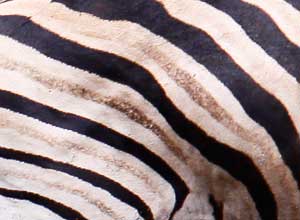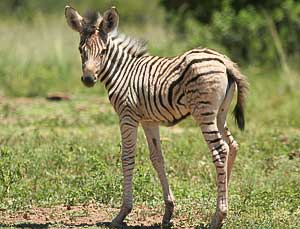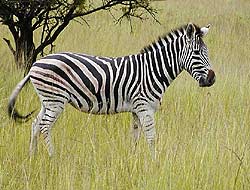Contact Details: Scotch Macaskill, Dirt Road Traders, Currys Post Road, Howick, KwaZulu-Natal, South Africa. Tel: +27 (0)82 578 2329. Privacy: Your privacy is guaranteed. See our Privacy Policy for more. This site accepts advertising and other forms of compensation - see Disclosure and Advertising for details. Site updated: 2022. Copyright © 2002 - 2022 Scotch Macaskill

| ||||||||||
|
||||||||||
|
See also info about: |
Zebra Information
Appearance

Zebra's rump showing "shadow" stripes The muzzle is black. A short, stiff mane runs down the back of the neck and the tail has a whisk of long black hair on the end. Behavior Stallions fight viciously for control of females. Males that do not hold breeding herds join bachelor herds with hierarchy depending on age. If threatened by predators, herds flee in tight bunches. Herd stallions defend their groups by running in the rear as they flee, kicking and biting attackers. Predators are much more successful if an individual zebra can be separated from the herd. The contrasting black and white stripes may help to confuse predators. 
Zebra foal standing on grassy plain Reproduction Lions and spotted hyenas take adult zebras; foals are taken by lions, spotted hyenas, leopards and cheetahs.
Diet Sounds Above information from The Ultimate Field Guide and other African mammal field guides. Return to Wildlife Info |
|||||||||
|
|
||||||||||
